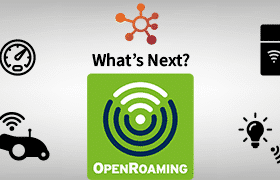The Pitfalls of IoT Device Localization
Losing Control in the Age of eSIM
In our increasingly interconnected world, the Internet of Things (IoT) has transformed how we interact with everyday objects. IoT devices have seamlessly integrated into our lives, providing convenience, efficiency, and enhanced control. However, as these devices become more sophisticated and connected, they also present new challenges—particularly the complex task of maintaining control over devices that have been localized to a local operator using eSIM technology.
The IoT connectivity market is also very different from mobile operators’ traditional consumer services. Consumer subscriptions can be streamlined into a handful of local subscription types with identical security and policy requirements. Many IoT use cases are inherently global in nature, and IoT customers are not as easy to group into a handful of subscription types. They may have diverse requirements in everything from keeping the same device IP address to security requirements.
Understanding eSIM and Localization in IoT
eSIM, or embedded SIM, is a technology that allows devices to switch between mobile network operators without needing a physical SIM card swap. This is particularly useful in IoT devices that are designed to be mobile or deployed across different regions. For example, a fleet of delivery trucks or smart vehicles can switch from one mobile network to another as they move between different countries or regions, ensuring seamless connectivity. It is also an enormous cost saving in logistics for global manufacturers just having to store one unit that works globally and bootstraps to the local network when powered up, rather than having to store units for different markets.
However, the global nature of IoT deployment often clashes with national regulations, particularly those surrounding permanent roaming. Permanent roaming occurs when a device remains on a foreign network for an extended period, which can lead to increased costs and regulatory scrutiny. To mitigate this, manufacturers and service providers often localize IoT devices by switching them to a local network operator via eSIM technology.
The Issue: Losing Control Over IoT Devices
While localization solves the issue of permanent roaming, it introduces a significant problem—loss of control over the device by the home operator.
1. Network Control:
When an IoT device is localized, the local operator gains control over it, just like any other device in their network. This leads to situations where the home operator, who initially managed the device, loses the ability to deliver unified global connectivity to their customers; for example, customers can not keep the device’s IP address as the local operator sets this.
2. Security Risks:
Security is another major concern. When the home operator loses control over the device, it also loses the ability to enforce security policies. The local operator may not have the same security standards. This can leave the IoT device vulnerable to cyberattacks, data breaches, or unauthorized access, which could have disastrous consequences depending on the device’s function. For instance, it will be impossible to deliver an Enterprise VPN for a localized IoT device.
3. Operational Disruption:
In some cases, local operators might impose restrictions or limitations that disrupt the normal operation of the IoT device. For instance, they might block certain data traffic or limit bandwidth, impacting the device’s performance. Additionally, if the local operator’s network experiences outages or poor connectivity, the home operator has little recourse to rectify the issue, leading to potential operational downtimes.
The Impact of Device Localization
As discussed, permanent roaming is prohibited in many countries due to regulations or commercial reasons in the relationship between the home and the local operator. The above challenges will make it impossible for home operators to deliver unified global IoT connectivity to their customers. The service will risk to differ for devices localized to different local networks globally.
Mitigating the Risks
To address these challenges, companies deploying IoT devices globally must carefully consider the implications of using eSIM and localizing their devices. It can become very complicated for them to keep their products connected globally. They need to handle multiple operators with individual contracts and potential integrations. All they want is connectivity, but now they need to be experts in different changing roaming regulations to stay compliant. This will not work in the long run, it is expensive and a mistake can potentially mean lost connectivity for their products.
IoT customers need an IoT CSP that can deliver truly compliant and unified global connectivity under one contract and one bill. But how can an IoT CSP achieve that if they lose control over the device when it is localized to the local mobile operator partner?
Enea IoT CCS is Coming to the Rescue
If you, as an IoT CSP, want to provide compliant and unified global connectivity for localized devices, then there is only one option: Take control of this connectivity as if it were your own and not the local partner operator’s.
You simply use the Multitenancy Private APN concept of the Enea IoT Connectivity Control Service (IoT CCS), using one APN for all customers while splitting the traffic to different Enterprise VPNs. Then, you connect your local partner networks and connectivity hubs to Enea IoT CCS the same way you connect your own network. You ask the connectivity partner networks to send all traffic for that shared APN (same APN name used for your network) to Enea IoT CCS in the cloud through secure IPSec tunnels.
This means that IoT CCS will be able to handle the traffic in the same way across all networks. IoT CCS can be configured to use the same device IP assignment, Enterprise VPN routing, and firewall settings, regardless of where the traffic comes from. The global IoT connectivity service can not be more unified than that.
Conclusion
While eSIM technology and IoT localization offer solutions to the challenges of permanent roaming, they also introduce new risks, particularly regarding control, security, and compliance. As the world continues to embrace IoT, it’s crucial for IoT CSPs to deliver a truly unified global IoT connectivity, ensuring that customers can retain control over their devices, no matter where they are in the world.
By understanding the risks and implementing robust management and security measures, companies can continue to leverage the benefits of IoT without sacrificing control or security. The future of IoT is bright, but it requires careful navigation to avoid the pitfalls of losing control in a localized, connected world.




